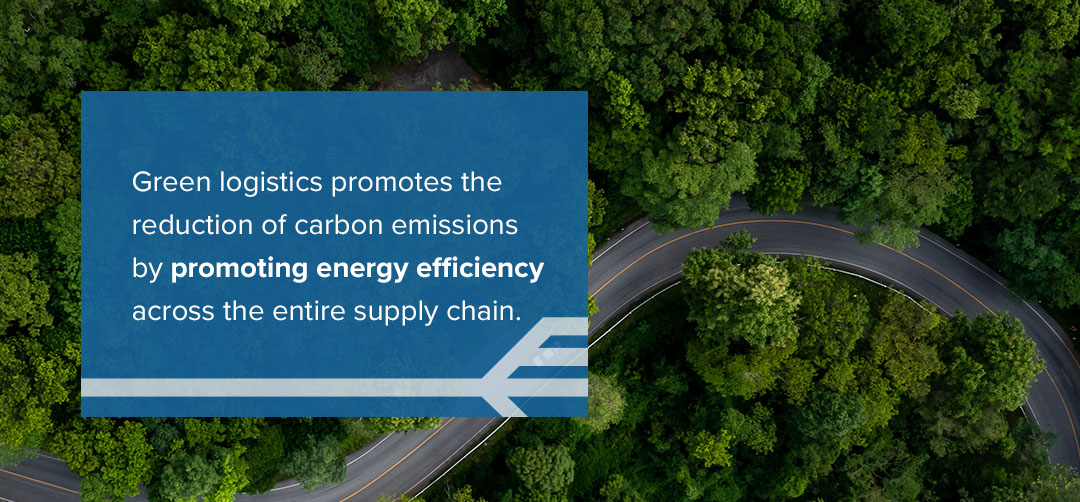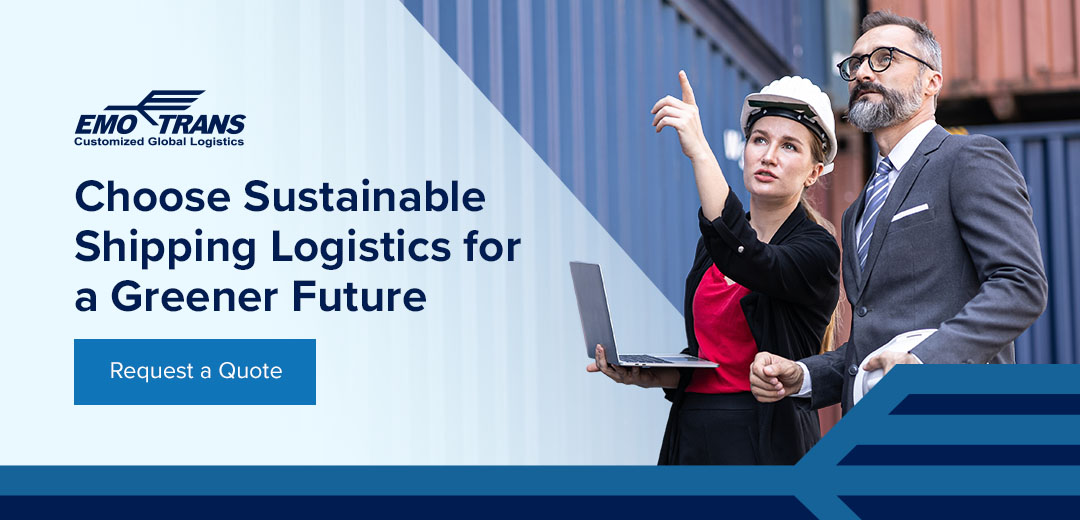
The globalization of supply chains has brought numerous advantages to businesses and consumers. However, this expansion has significantly impacted the environment — larger supply chains require more energy, producing more carbon emissions.
Sustainable supply chain management is an essential step toward protecting the planet and its people by upholding the highest environmental and social standards. The benefits of supply chain sustainability also extend to conserving your business’s resources, enhancing your brand image and providing your consumers with more ethical shopping options.
Explore tips you can use to reduce your carbon footprint in the supply chain in this guide.
Strategies for Carbon Emissions Reduction in Supply Chain Logistics
Supply chains contribute more than 90% of a company’s greenhouse gas emissions. By focusing a large part of your sustainability efforts on your supply chain, you can make a notable difference in your company’s impact on the environment. As you consider taking this step, here are two strategies to prioritize.
1. Identifying Areas of High Environmental Impact
You must start by understanding where the problem lies. Identifying areas of high environmental impact involves determining the carbon emissions of different operations. This data informs your decision-making process and sustainability goals. You can use tools such as those from the Greenhouse Gas Protocol or our greenhouse gas emissions calculator to determine the volume of carbon emissions produced at different stages of your supply chain.
There are three main types of emissions to look into when assessing the impact of your operations. These are Scope 1, 2 and 3 emissions, which are the different emissions companies produce. Here is a quick overview of each:
- Scope 1 emissions are produced by sources you own, such as company facilities and vehicles.
- Scope 2 emissions refer to the kind produced using energy from another company.
- Scope 3 emissions are upstream and downstream emissions, such as using sold products and employee commuting.
Scope 1 and 2 emissions are easier to track and manage, so most companies focus on these first before moving to reduce Scope 3 emissions.
2. Executing Sustainable Changes
After calculating the impact of your carbon emissions, you need to make this information public so that consumers can understand the impact of their purchasing decisions.
Businesses should also set sustainability goals and targets that align with their core business models. This approach ensures integrity and clarifies priorities across the entire organization. It may help to explore how other organizations have worked to make their supply chains more eco-friendly. For example, IKEA, Coca-Cola and Patagonia are some of the most well-known companies taking strides toward greener supply chains as of 2023.
Finally, you can engage sustainability experts to help you develop and implement the best carbon reduction strategies.
What Is Green Logistics?

Green logistics is a business practice that promotes energy efficiency across the entire supply chain, including procurement, inventory management, warehousing, distribution and packaging. It promotes the reduction of carbon emissions by promoting energy efficiency across the entire supply chain.
- Implementing a circular economy business model that embraces sharing, repairing, refurbishing, reusing and recycling products to reduce waste.
- Reducing fuel consumption and using alternative fuels and electric vehicles.
- Implementing energy management systems.
- Optimizing delivery routes.
- Offering on-demand delivery to reduce failed delivery rates.
- Switching to bio-degradable and sustainable packaging materials.
How Sustainable Supply Chain Management Can Enhance Your Brand Image
As mentioned, informing your clientele about your sustainability efforts is paramount because they influence their purchasing decisions. More consumers are concerned about their shopping decisions, with up to 72% of survey respondents saying sustainability influences their purchasing decisions. A 2020 McKinsey survey also reveals that 60% of United States consumers are willing to pay more for goods with sustainable packaging.
In addition, effectively communicating your dedication to sustainable logistics and supply chain management helps build customer trust and loyalty. You can amplify your sustainable supply chain management on your company website, social media and product packaging to enhance your brand image and reputation.
Commitment to sustainability is also becoming a business-compliant requirement, which affects your client and investor base. For example, in 2022, the European Sustainability Reporting Standards made it compulsory that all companies operating in European Union member nations adhere to sustainability standards.
How Technology Helps Reduce Supply Chain Carbon Emissions
The right technology helps significantly reduce carbon emissions in supply chains. Some of the top technological solutions you can implement to work toward sustainability include:
- Route planning software: Optimizing your delivery routes with software helps reduce carbon emissions by ensuring drivers avoid long or congested routes that increase fuel consumption. It also boosts your environmental sustainability efforts by minimizing the number of shipments made.
- Artificial intelligence (AI): You can use AI in your business to improve predictive analytics and implement sustainable supply chain management tasks such as route planning and inventory management. You can also use AI to identify trends and patterns from large sets of sustainability data and identify opportunities that can help reduce carbon emissions.
- Blockchain technology: Blockchain enables efficient and transparent supply chain tracking. It also allows you to run feasibility studies that inform sustainability decisions.
Choose Sustainable Shipping Logistics for a Greener Future
Sustainable supply chain management has numerous benefits for the environment, but your business will notice significant advantages, too. You can start by implementing small changes while working toward the bigger goal of achieving zero carbon emissions.
We at Emo Trans can help you start on the path to sustainability in supply chain management by providing you with comprehensive global logistics solutions. For more than 50 years, we have worked with customers around the world to create streamlined supply chains, and we highly value implementing sustainability every step of the way.
We’ll work with you to find the best options to fit the nature of your business operations and help you set sustainability goals — every business has different needs, and we recognize the importance of an individualized approach. For more information on how we can help you create a more efficient supply chain while reducing emissions, contact us today.

